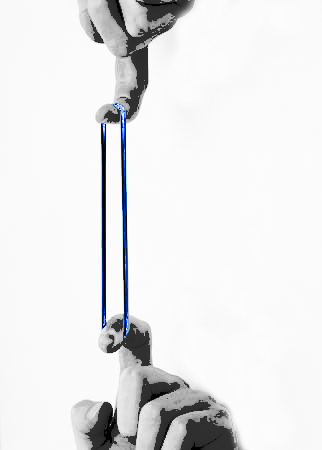Rubber bands fling sensor tech into future
 Stretchy bands of graphene could be used to make a new generation of implanted sensors.
Stretchy bands of graphene could be used to make a new generation of implanted sensors.
Researchers in the UK have treated common elastic bands with graphene to create a flexible sensor that is cheap but highly-perceptive.
Once treated, the rubber bands remain highly pliable.
By fusing the material with graphene - which gives an electromechanical response when moved – the team discovered that the material can be used as a sensor to measure a patient's breathing, heart rate or movement, alerting doctors to any irregularities.
While body motion sensors already exist in a number of forms, they have not been widely used due to their complexity and cost of production.
The latest development could bring some astonishing advances.
“Until now, no such sensor has been produced that meets needs and that can be easily made. It sounds like a simple concept, but our graphene-infused rubber bands could really help to revolutionise remote healthcare,” said Dr Alan Dalton from the University of Surrey.
“This stretchy material senses motion such as breathing, pulse and joint movement and could be used to create lightweight sensor suits for vulnerable patients such as premature babies, making it possible to remotely monitor their subtle movements and alert a doctor to any worrying behaviours,” co-author Professor Jonathan Coleman from Trinity College, Dublin said.
“These sensors are extraordinarily cheap compared to existing technologies. Each device would probably cost pennies instead of pounds, making it ideal technology for use in developing countries where there are not enough medically trained staff to effectively monitor and treat patients quickly.”







 Print
Print